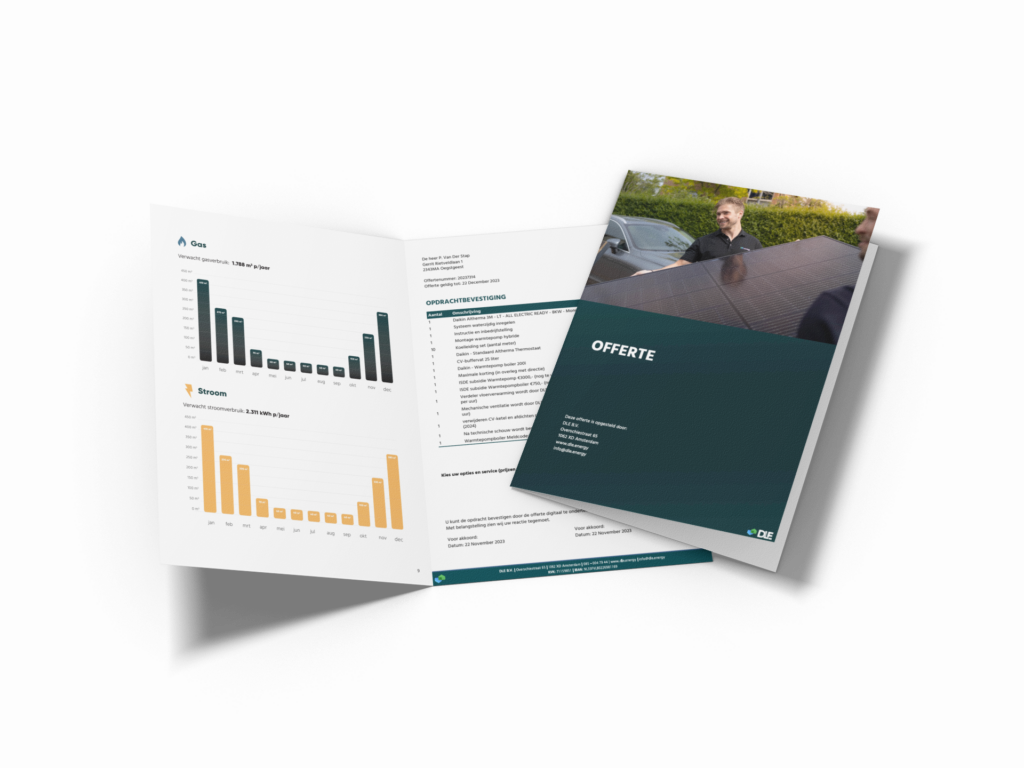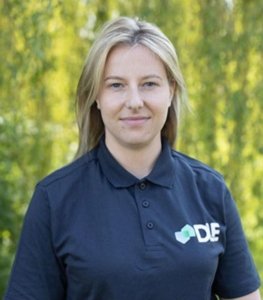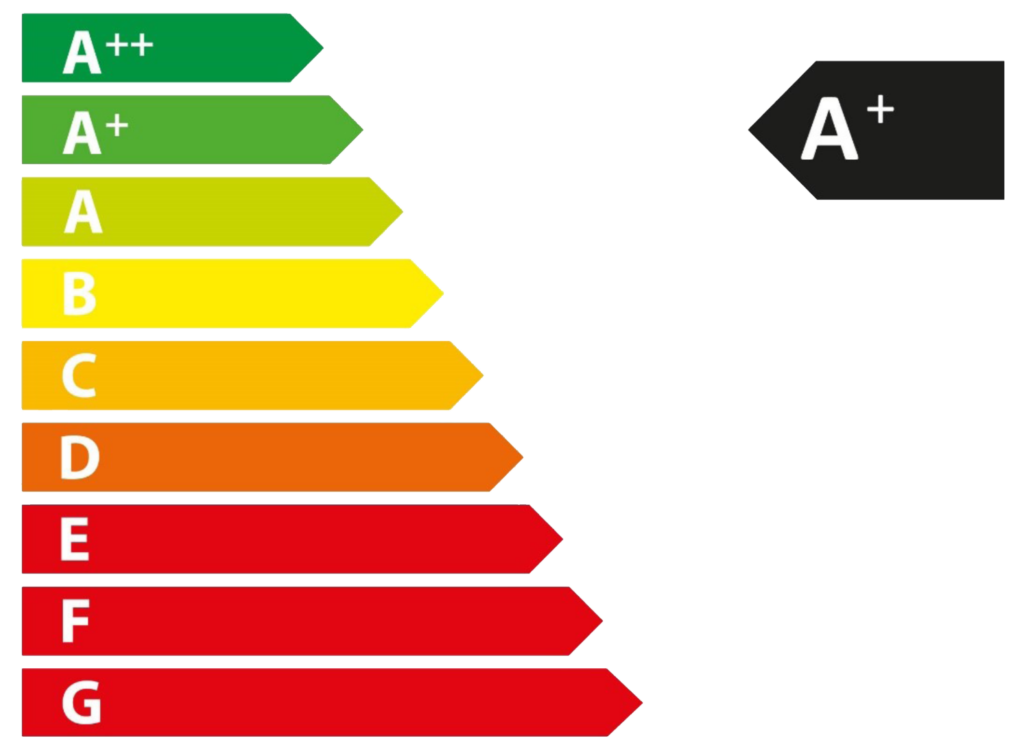Frequently Asked Questions
Welcome to the FAQ page, your go-to hub for answers to frequently asked questions and valuable insights.
We understand that clarity and convenience are essential, which is why we've put together this section to provide you with the information you need quickly and efficiently. Whether you're curious about our products and services or seeking specific details, we have the answers you need. Our FAQ page is designed to guide you with clear explanations, practical tips, and relevant details. Use this page as your primary source of information. If you want to learn more or have specific questions, we're always here to help. Can't find what you're looking for? Let us know!
Heat Pumps
A Hybrid Heat Pump
A hybrid heat pump combines the efficiency of a heat pump with the convenience of a gas boiler. The gas boiler provides hot water and only kicks in when it’s more economical to heat with gas, potentially leading to significant gas savings of up to 70%.
All-Electric Ready Heat Pump vs. Hybrid Pump
An All-Electric Ready heat pump starts as a hybrid system, but with a future-proof design. This system is prepared for a full transition to gas-free heating. The installation includes a heat pump with the appropriate full load capacity to operate independently, while the hot water boiler is initially omitted.
Fully Electric Heat Pump
With an All-Electric heat pump, you heat your home entirely with electricity, eliminating the need for gas. Both heating and hot water are provided by the heat pump, with a boiler tank replacing the traditional gas boiler.
This depends on various factors. If you install just a heat pump without solar panels and a home battery, your monthly savings will be lower compared to combining the installation with solar panels and/or a home battery.
During a consultation, we will estimate the savings you can achieve with the installation of a (hybrid) heat pump.
Key Difference: An all-electric system runs continuously, even in summer when people are outside and can hear the unit. In contrast, a hybrid heat pump only operates during the colder months.
Heat pumps come in various models. You can choose between a heat pump with both an indoor and outdoor unit (split system) or a single-unit model (monoblock). These options include hybrid and all-electric variants. Based on your home’s architectural layout, future plans, and budget, we will help you determine the best heat pump for your needs.
Solar Panels
Solar panels are coated with a special layer that allows dirt to wash away after rainfall, so they require minimal maintenance. Generally, it’s advisable to inspect your panels once a year for sand or bird droppings. A biannual cleaning is usually more than sufficient. If your panels appear dirty after events like a sandstorm, be cautious with cleaning. Solar panels are delicate and should not be cleaned with harsh cleaning agents, abrasive sponges, or high-pressure washers.
Yes, solar panels are nearly fully recyclable. The primary component of solar panels, silicon, can be reused indefinitely. Additionally, other parts of the panel, such as aluminum and glass, are easily separable and recyclable.
The way solar panels are connected significantly affects the performance of your solar system. Panels can be wired in series or in parallel. In a series-connected system, the entire circuit performs based on the weakest panel, which can be especially problematic if one panel is shaded. For instance, shadows from a chimney or tall tree can negatively impact the overall output. In contrast, parallel connection allows each panel to operate independently through a micro-inverter per panel. This setup is ideal for situations with significant shading or multiple light exposure profiles. For optimal performance, it’s advisable to connect panels in parallel using Enphase micro-inverters installed under each panel.
An inverter connects to the solar panels via a cable, converting direct current (DC) into usable alternating current (AC). This AC power then flows to your electrical panel, allowing household appliances to use the electricity. Typically, a string inverter measures about 40 cm x 50 cm x 25 cm. During the day, when the panels are generating energy, the inverter is active; at night, when the panels are off, the device is turned off and silent. Due to heat emission, it’s crucial to install the inverter in a location with adequate ventilation. DLE utilizes Growatt inverters for series connections and Enphase microinverters for parallel systems.
Homeowners planning for the future often opt for the Enphase system. This choice ensures they can easily expand their setup with additional panels and a smart grid-ready control system, maximizing their use of self-generated energy.
Guarantees
We guarantee the optimal performance of the products we provide, as detailed in our terms and conditions. We ensure that any defects in the installation of the product will be addressed within 24 months from the installation date.
An installation warranty provides peace of mind and short-term security by covering repair or replacement costs due to installation errors. It encourages us to deliver high-quality work, as we are responsible for any mistakes made during the installation.
A service contract, on the other hand, is a long-term agreement between you and DLE.energy. This contract ensures the optimal performance and longevity of your heat pump by offering regular maintenance and service over an extended period.
Therefore, we recommend purchasing a service contract alongside your heat pump to ensure ongoing support and performance.
An installation warranty is a written agreement that guarantees your heat pump installation will be free from defects in craftsmanship and materials for a specified period—two years with DLE.energy. This means if issues arise during this time due to improper installation, you are entitled to free repairs or replacement of defective parts.
Our premium service contract is so comprehensive that you continue to benefit from Daikin’s exceptional 10-year product warranty year after year. Each year, we perform the necessary steps to ensure your system operates at peak performance. This not only maintains maximum efficiency but also provides you with the peace of mind that comes with a reliable heating and cooling system.
DLE offers Daikin heat pumps with a standard 10-year warranty extension. Additionally, our range includes panels with a minimum product warranty of 25 years and a minimum performance guarantee of 30 years.”
Battery
The duration for which energy is retained in your home battery depends on your energy usage and the size of the battery. Generally, a more effective way to view this is that the battery discharges by only 1% per month when inactive, which is minimal. The optimal goal is to charge your home battery daily and use the power, maximizing your benefit from your own green energy or dynamic electricity prices. By doing this, you ensure the highest efficiency from your smart home battery.
The term ‘self-consumption’ refers to the energy you generate and use directly without sending it to the electricity grid. A home battery enhances this self-consumption by storing excess energy produced by your solar panels, which isn’t immediately used. When your solar panels aren’t producing enough energy to meet your household needs, the stored energy from the battery is utilized. This reduces your reliance on grid electricity and increases your self-consumption.
A 3 kWh capacity is ideal for covering the evening and night consumption of an average household. If you have any doubts, feel free to contact us by phone or email so we can discuss your specific situation. For larger households and additional energy needs, it’s easy to expand the capacity of your home battery.
Charging Station
Charging time varies based on the type of charging station and your vehicle. Generally, home chargers provide a full charge within a few hours, while public fast chargers can charge your vehicle much quicker.
Yes, many charging stations offer smart features such as remote control, energy management, and charging scheduling. These capabilities allow you to optimize your charging sessions and manage costs effectively.
Bidirectional charging utilises smart charging stations that, after your electric vehicle is charged, can send surplus energy back to the grid when needed. This technology allows you to power devices in your home, enhancing energy efficiency and reducing reliance on external power sources.
Yes, bidirectional charging requires a specialised charging station. This charging station must be compatible with bidirectional use, and your electric vehicle must also support bidirectional charging capabilities.
Dynamic Energy
A dynamic energy contract offers greater flexibility than a fixed-rate contract, as you’re not tied to a set price for an extended period. The main advantage of a dynamic energy contract is that, with the right (smart grid) installations in your home, you can benefit from lower energy prices when market conditions are favorable.
A dynamic energy contract features fluctuating prices for electricity and gas. These prices are directly linked to the rates at which power and gas are traded on the markets. Energy is bought and sold for the following day on the energy market, with different electricity rates applied each hour. Additionally, gas prices are updated daily.
How can DLE help you benefit from a dynamic contract?
DLE provides all the installation services needed to maximise your energy self-sufficiency. By combining solar panels, a heat pump, a home battery, and a charging station, you can store electricity when it’s expensive and only return it to the grid when the price is higher. This way, you optimize your energy use and save more.
Finance
Your solar panels generate electricity, some of which you use immediately for appliances that require power at the same time. The surplus energy that you don’t use is fed back into the grid. Under the net metering scheme, you can offset this fed-in energy against your total annual consumption. If you still have excess energy left over after this, you’ll receive a feed-in tariff.
Use the Investment Subsidy for Sustainable Energy and Energy Savings (ISDE) to make the greening of your home more affordable. This subsidy allows you to get money back after installing a (hybrid) heat pump or solar boiler. For more details, visit the RVO website. Please note that RVO has a processing time of 6-8 weeks, and subsidies are allocated and disbursed quarterly.
Net Metering After January 1, 2025 – In April 2019, the government announced that solar panel owners could benefit from the net metering scheme in its current form until the end of 2022. It has since been confirmed that you can continue to use net metering until at least 2025. After that, the scheme will gradually be phased out to 0% by 2031. The scheme will be completely abolished only in 2031.









